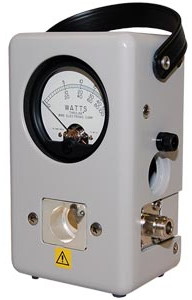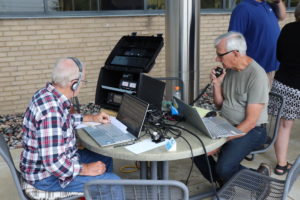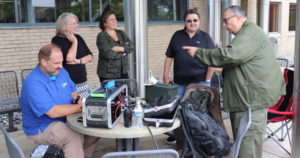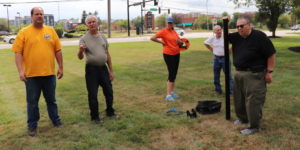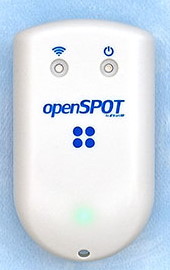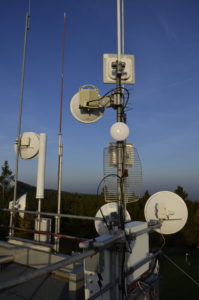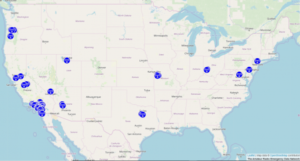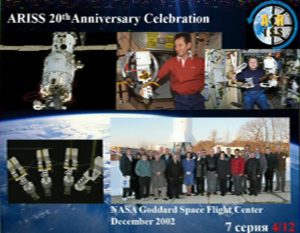One of the responsibilities of the Technical Coordinator in the Ohio Section is to submit something for the Section Journal. The Section Journal covers Amateur Radio related things happening in and around the ARRL Ohio Section. It is published by the Section Manager Tom – WB8LCD and articles are submitted by cabinet members.
Once my article is published in the Journal, I will also make it available on my site with a link to the published edition.
You can receive the Journal and other Ohio Section news by joining the mailing list Tom has setup. You do not need to be a member of the ARRL, Ohio Section, or even a ham to join the mailing list. Please sign up!
If you are an ARRL member and reside in the Ohio Section, update your mailing preferences to receive Ohio Section news in your inbox. Those residing outside the Ohio section will need to use the mailing list link above. Updating your ARRL profile will deliver news from the section where you reside (if the leadership chooses to use this method).
- Go to www.arrl.org and click the Login button.
- Login
- When logged in successfully, it will say “Hello <Name>” in place of the Login button where <Name> is your name. Click your Name. This will take you to the “My Account” page.
- On the left hand side, under the “Communication” heading (second from the bottom), click Opt In/Out
- To the right of the “Opt In/Out” heading, click Edit
- Check the box next to “Division and Section News.” If it is already checked, you are already receiving the Ohio Section Journal.
- Click Save
- There should now be a green check mark next to “Division and Section News.” You’re all set!
Now without further ado…
Read the full edition at:
THE TECHNICAL COORDINATOR
Jeff Kopcak – TC
k8jtk@arrl.net
The Ohio Section lost a friend and advocate last month. Announcements came from our Section Manager regarding Jim Yoder – W8ERW’s passing. Jim was my predecessor in this Technical Coordinator role.
I met Jim as the TC when he gave a presentation on Ham Radio MESH. In 2014, I was wiring a series of articles published in club newsletters on Raspberry Pi’s and Software Defined Radio (SDR) receivers. Jim had read one of those before presenting at the meeting. Discussing MESH ahead of his presentation with a group at the meeting, he stopped and said to me ‘you’re someone I need to talk to.’ Now I was in trouble.
After the presentation and over the next few days via E-mail, he was recruiting me for a Technical Specialist appointment within the section. ‘We need more Specialists familiar with digital modes and newer technologies.’ I didn’t know much about the technical side of the section but Jim answered all my questions and saw the appointment through. He encouraged to remain in contact and let him know things I was working on. He promoted my work and presentations in the Ohio Section Journal.
Jim lived in northwest Ohio near where I had previously gone to school. Though I left the area, I was making regular trips to Wood County ARC club meetings. We always talked about meeting up at a meeting or getting together while out that way.
Sometime later, changes in Jim’s personal life took him away from the Ohio Section to the North Texas Section. This left his cabinet position vacant. As I was told, Jim liked the work I had been doing and, being a younger ham, would bring down the average age of the Section appointees. He recommended me to fill his position. Boy, I was really in trouble. That was eight years ago this month.
Though Jim had left the Section, he was always there to make sure all my questions were answered and that I didn’t get into too much trouble. I definitely messaged him more than a few times asking how things should be handled and “what should I do about…?”
As I was managing to figure out my new role, we didn’t communicate as much. I took his comments as an opportunity to balance out the Technical Specialists with knowledge in digital and newer technology to form a more well-rounded group. I ran into him again in the Section booth at Hamvention. Figuring he was up for the trek to Hamvention, he informed me he was relocating back to the Section.
He maintained his Technical Specialist appointment throughout his moves and once again became a valuable resource to the Ohio Section. We finally did meet at a club meeting when he presented on MESH and demoed MESH devices.
During the lock downs, on my crusade to knock things off my ham radio to-do list, I purchased and flashed a MikroTik hAP ac lite device to finally be a part of the Ham Radio MESH network. Bring there are no other nodes near me and not having any high-profile equipment, I couldn’t do much with it. Jim allowed me to tunnel my device over the Internet with his in Fremont. This afforded me the ability to interact with devices within RF range of his and access services provided by those nodes. He promoted a new use of technology in ham radio called Hamshack Hotline. He created and maintained a list of users in northwest Ohio and later expanded to the entire Section.
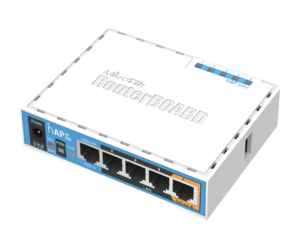
Jim still emailed me interesting topics, things he found, and things he was working on. One of his last was linking northwest Ohio (which I’m linked into) and southwest Ohio MESH clusters. At that time, they had 111 total nodes and were expecting to add more with the demos at Hamvention this year.
Thanks, Jim, for all the knowledge, Elmering, help, being a supporter, and generally being a friend. Rest in Peace, W8ERW/SK.
I was talking with our Section Manager because he was having trouble getting E-mail through to me. During the conversation he mentioned the ARRL’s E-mail forwarder has been having issues for a while. My most recent round of issues started about the 4th of July. The forwarder service provides the callsign[@]arrl[.]net E-mail addresses.
Though I’m receiving most messages, the SM had issues, I’ve had some issues sending to other users. Here’s an example of a message the “sender” might receive, the person whom sent a message to an arrl.net user when the message was not delivered:
<K8JTK@arrl.net>: host mx1.forwardemail.net[138.197.213.185] said: 421 Try
again later; If you need help, forward this email to
support@forwardemail.net or visit https://forwardemail.net ; Please note we
are an email service provider and most likely not your intended recipient.
(in reply to end of DATA command)
A key indicator is “forwardemail.net.” Forward Email is the service used by the ARRL for the forwarder.
Also, people don’t read those messages and just say “your E-mail is bouncing.” Being the IT person that I am: what is the error? Users being users: “I don’t know, I didn’t read it.”
I recall maybe two other times I’ve had issues with the forwarder. Technical Specialist Jason – N8EI manages the mailing list for his club. He says they see delivery issues quite often with the forwarder including messages not being delivered and club messages being flagged as spam despite having all the necessary verifications in place (known as DKIM). When users complain they don’t receive messages, his club requires an alternative, non arrl.net, address.
If you are looking for better free E-mail account, I have been using a free Zoho Mail personal account for the past four years. Zoho is geared toward business accounts and services. I’ve noticed little-to-no unexpected downtime compared to the provider used at my work (*cough* *cough* Microsoft *cough*). I found Zoho after getting fed up with other big-name free E-mail services. The last straw was when an Outlook free account stopped being able to receive mail. When people complain about G-Mail flagging legitimate newsletters as spam or not being delivered at all, I’ve always received them using Zoho Mail. I use Fastmail (paid) for my personal domains. Both are fantastic services.
Though legitimate messages are being blocked through the arrl.net address, I have been receiving a ton of spam. Mostly from APAC (Asia-Pacific) countries. Maybe it’s related to the ‘issues.’
As for my alternatives: me at my callsign dot radio *or* me at my callsign dot org – will work.
Thanks for reading and 73… de Jeff – K8JTK

